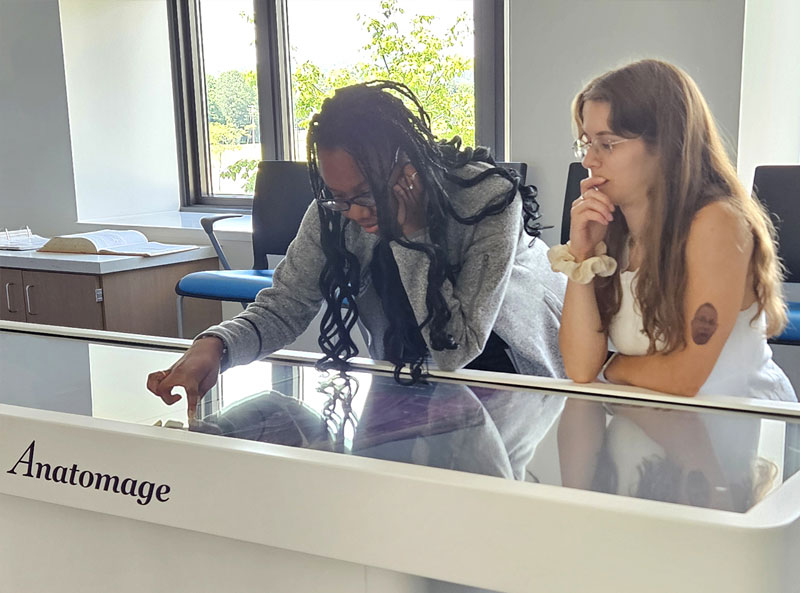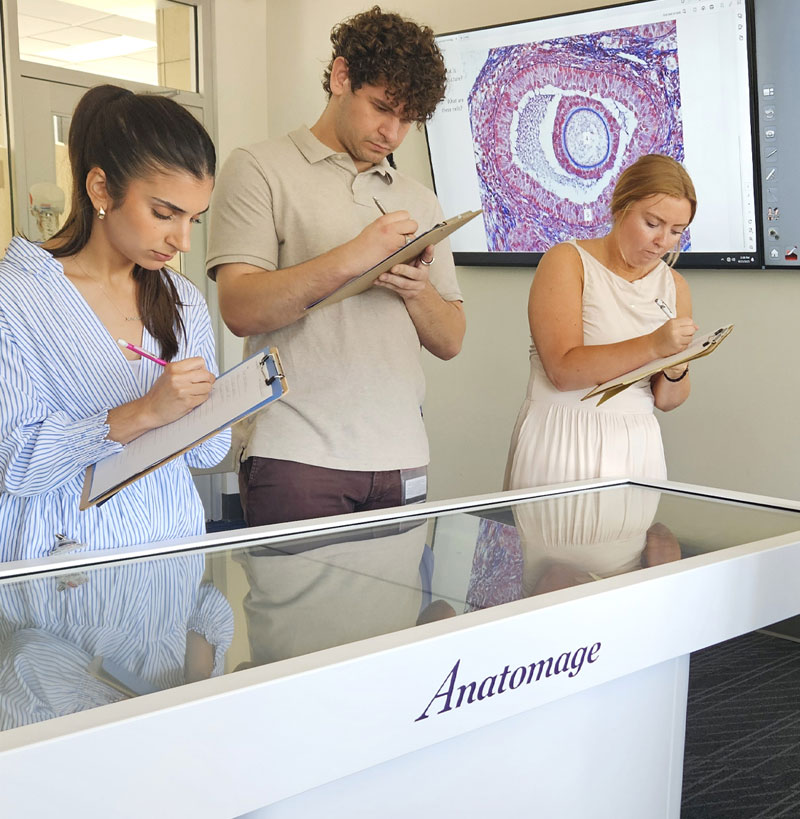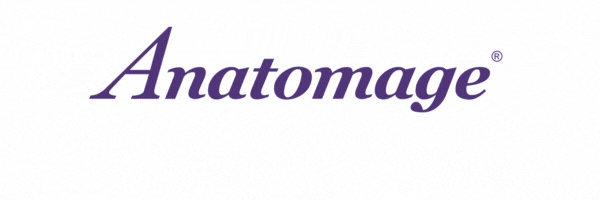Case Study: St. Bonaventure University
Case Study:
St. Bonaventure University
Innovating Anatomy Instruction: How St. Bonaventure Developed Their PA Curriculum with the Anatomage Table
Empowering Students with Interactive Anatomy Visualization
Before matriculating the first cohort of students for their Physician Assistant Studies program in 2021, St. Bonaventure University faced a critical decision: how to provide comprehensive anatomy education without traditional cadaver labs. The university sought an innovative solution that would deliver exceptional educational outcomes for their intensive PA program. With careful consideration, they decided to use the Anatomage Table, a medical education and virtual dissection platform, to deliver accessible, engaging, and clinically-relevant learning experiences across their anatomy courses.
Challenge
According to Scott Medler, a professor in the PA program, the university’s decision to move away from traditional cadaveric dissection was determined by several factors:
- The accelerated 12-month didactic curriculum demanded efficient learning tools that could integrate seamlessly with their modules — spanning nine anatomical systems across three semesters — while also preparing students for the national certification exam.
- As a Catholic-Franciscan institution, the university wanted a human dissection-alternative that better aligned with their religious and ethical values.
- Building and maintaining a traditional cadaver lab required significant investment, including ongoing maintenance costs and regulatory oversight that could strain program resources.
Additionally, traditional dissection presents another barrier for students: the time and expertise it demands. As Professor Medler explained, “Doing dissection is a skill. I’ve been dissecting anatomical specimens for over 20 years, [so] I can dissect much more efficiently than an undergraduate coming in.” For students in an accelerated program, when there’s no extra time to “practice” dissection, that learning curve can be especially difficult to overcome.
These challenges highlighted the need for a solution that was able to deliver high-quality anatomical education at the pace required by an intensive curriculum, while also being ethically aligned and cost-effective. The university sought a tool that could streamline instruction and support students in mastering complex anatomical concepts quickly and accurately, without compromising educational depth or integrity.
Solution
St. Bonaventure invested in two Anatomage Tables before the start of the program, implementing them as the cornerstone of their anatomy courses. Subsequently, the university acquired two more Anatomage Tables for the School of Health Professions. The Tables, which utilize real human cadaver data (not artistic renderings), provide authentic anatomical learning experiences.

Drawn to St. Bonaventure in part because of its investment in Anatomage technology, Professor Medler went on to design an innovative curriculum built around the Anatomage Tables, featuring:
- Weekly integration, with the Tables used continuously throughout the 12-month didactic curriculum with three modules per semester.
- Virtual pin practicals mirroring traditional cadaver-based exams with 40-structure identification tests.
- Challenge quizzes creating friendly competition between student groups, driving engagement and peer-to-peer teaching.
- A comprehensive digital curriculum library, utilizing anatomy presets and quizzes built by Professor Medler over four years.
This Anatomage Table-centered approach has not only streamlined course delivery, but also elevated the quality and consistency of anatomical instruction. By building the curriculum around the Tables from day one, the program ensures students receive a rigorous, clinically relevant education that fully prepares them for certification and clinical practice.
People visiting will ask, ‘Is it better to have physical cadavers or Anatomage Table cadavers?’ They both provide great important learning opportunities and have different strengths and limitations, but for our program and our students, I feel that the Anatomage Tables are much better at meeting their needs.
Scott Medler, Professor of Physician Assistant Studies at St. Bonaventure University
Results
For St. Bonaventure, the implementation of the Anatomage Tables has led to transformative results across academic performance, engagement, and teaching efficiency. Student outcomes in anatomy have been particularly strong, with practical exam averages reaching at least 90%. The new average represents significant improvement compared to Professor Medler’s past experience with traditional anatomy instruction, where performance varied widely and many students encountered “deer in headlights” moments during assessments.

The technology has also elevated students’ ability to grasp complex anatomical relationships, and student engagement has been equally impressive. Many learners voluntarily spend additional hours at the Tables, practicing content and even creating their own quizzes for self-study. From a teaching standpoint, the ability to save and reuse anatomical presets has created a growing library of custom lessons and assessments, eliminating the need to reset each semester’s curriculum from scratch.
The benefits of the Anatomage Tables have even extended across multiple programs at St. Bonaventure’s School of Health Professions. In addition to their foundational role in the PA curriculum, the Tables are used by occupational therapy students in kinesiology and neuroanatomy courses, and by nursing graduate students studying advanced pathophysiology.
“From a basic sciences and anatomy perspective, the Anatomage Table is really central to student learning,” shared Professor Medler. By placing the Anatomage Table at the center of their anatomy curriculum, St. Bonaventure has not only enhanced student mastery of complex anatomical concepts, but also created a high-impact learning environment that supports long-term retention and clinical readiness.
All photos provided by St. Bonaventure University.
